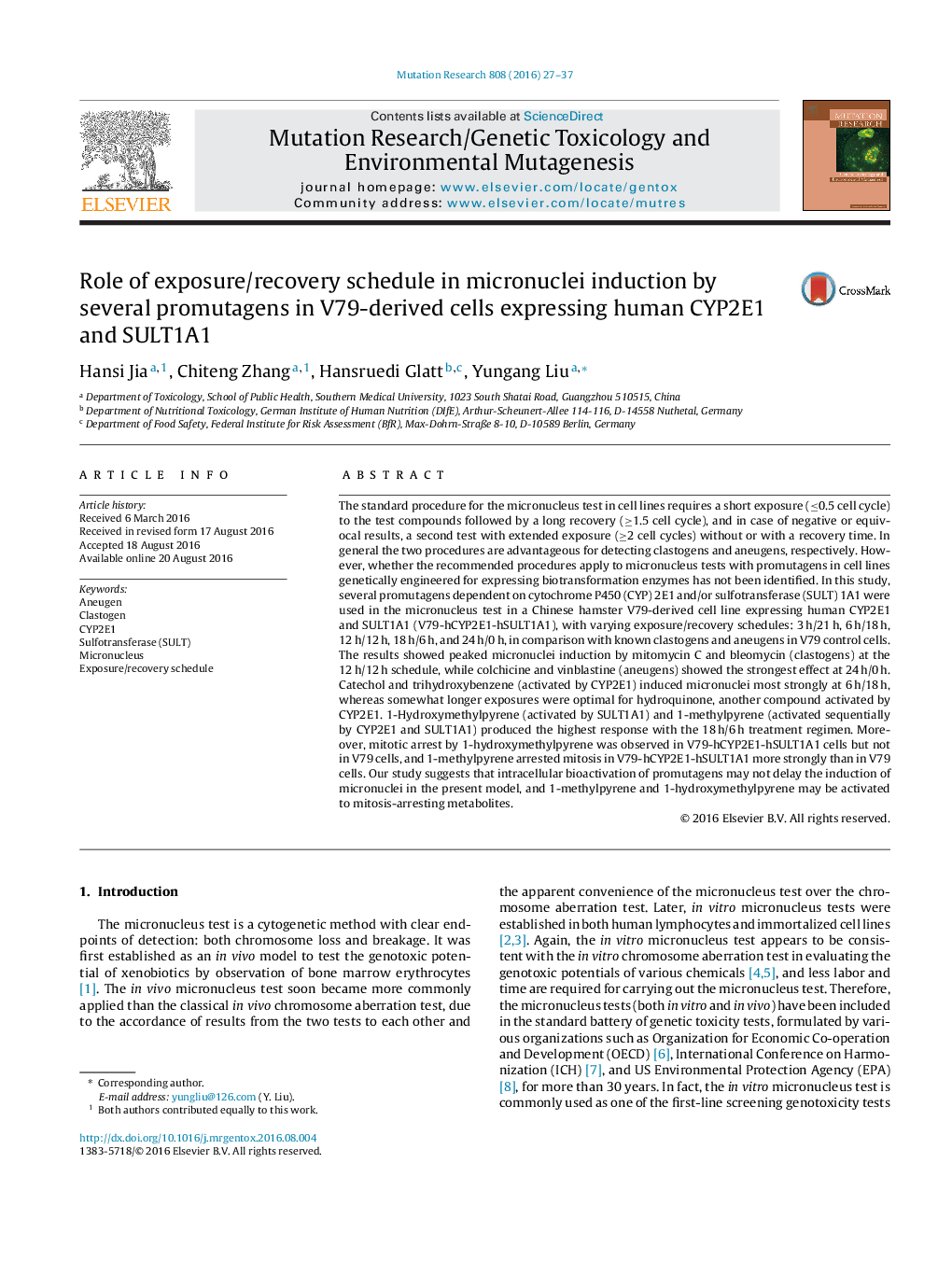| Article ID | Journal | Published Year | Pages | File Type |
|---|---|---|---|---|
| 2147790 | Mutation Research/Genetic Toxicology and Environmental Mutagenesis | 2016 | 11 Pages |
•Varied treatment regimens are preferred for micronuclei induction by promutagens.•Activation of promutagens in V79-hCYP2E1-hSULT1A1 cells may not delay MN formation.•1-Methylpyrene and 1-hydroxymethylpyrene may have a mitotic arresting activity.
The standard procedure for the micronucleus test in cell lines requires a short exposure (≤0.5 cell cycle) to the test compounds followed by a long recovery (≥1.5 cell cycle), and in case of negative or equivocal results, a second test with extended exposure (≥2 cell cycles) without or with a recovery time. In general the two procedures are advantageous for detecting clastogens and aneugens, respectively. However, whether the recommended procedures apply to micronucleus tests with promutagens in cell lines genetically engineered for expressing biotransformation enzymes has not been identified. In this study, several promutagens dependent on cytochrome P450 (CYP) 2E1 and/or sulfotransferase (SULT) 1A1 were used in the micronucleus test in a Chinese hamster V79-derived cell line expressing human CYP2E1 and SULT1A1 (V79-hCYP2E1-hSULT1A1), with varying exposure/recovery schedules: 3 h/21 h, 6 h/18 h, 12 h/12 h, 18 h/6 h, and 24 h/0 h, in comparison with known clastogens and aneugens in V79 control cells. The results showed peaked micronuclei induction by mitomycin C and bleomycin (clastogens) at the 12 h/12 h schedule, while colchicine and vinblastine (aneugens) showed the strongest effect at 24 h/0 h. Catechol and trihydroxybenzene (activated by CYP2E1) induced micronuclei most strongly at 6 h/18 h, whereas somewhat longer exposures were optimal for hydroquinone, another compound activated by CYP2E1. 1-Hydroxymethylpyrene (activated by SULT1A1) and 1-methylpyrene (activated sequentially by CYP2E1 and SULT1A1) produced the highest response with the 18 h/6 h treatment regimen. Moreover, mitotic arrest by 1-hydroxymethylpyrene was observed in V79-hCYP2E1-hSULT1A1 cells but not in V79 cells, and 1-methylpyrene arrested mitosis in V79-hCYP2E1-hSULT1A1 more strongly than in V79 cells. Our study suggests that intracellular bioactivation of promutagens may not delay the induction of micronuclei in the present model, and 1-methylpyrene and 1-hydroxymethylpyrene may be activated to mitosis-arresting metabolites.
